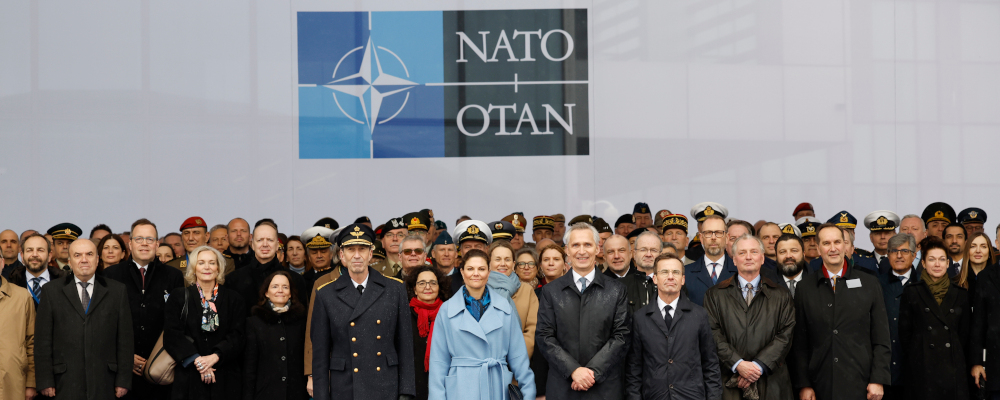The Hub is pleased to present a weekly column from author and historian Antony Anderson on the week that was in Canadian history.
April 4, 1949: Canada signs the North Atlantic Treaty
They said they found his body around 6:30 in the morning. He lay in his pajamas, smashed into cold winter stone. The Soviets said he had jumped out of the third-floor bathroom window of his apartment. Friends and colleagues knew in their bones he had been pushed. There at the age of 61, in the courtyard of Czernin Palace, which housed the foreign ministry in Prague, lay the corpse of Jan Masaryk, the Czechoslovakian foreign minister. It was March 10, 1948. The Communists were busy turning the country into another Soviet prison cell.
Masaryk’s murder—”But we have a suicide note!” the Soviets kept insisting—stunned an entire generation of diplomats who had met him over the years when he was the ambassador to Great Britain and a delegate at the United Nations. In Ottawa, senior PMO advisor Jack Pickersgill described “a sudden…a kind of real conversion that day” in the official Canadian mindset. Prime Minister William L. M. King was “horrified.”

Lester Pearson, deputy minister at External Affairs (what we called our foreign ministry then) had worked alongside Masaryk on various U.N. assignments, “He was a magnetic personality and a delightful person. I had this feeling about Czechoslovakia through him which made it seem a little more frightening and real than it might otherwise have been.” Looking back in retirement at this moment, Pearson noted, “Fear is usually, in international affairs, the greatest incentive to action and certainly fear was established when the Russians moved into Czechoslovakia at that time that they might move right across Western Europe.” He didn’t mean move militarily but rather slither through subversion, infiltration, coups, tampering with elections—the nasty under-the-radar stuff. There was so much fear in the air that diplomats got very creative.
In the months before Masaryk’s murder, we had been the first official voice to speak up, publicly, about a potential response to the encroaching communist darkness.
In September 1947, External Affairs minister Louis St. Laurent stood before the General Assembly and told the United Nations out loud what everyone knew: the world organization was incapable of holding a global peace because the Security Council, reflecting the Cold War schism, had “become frozen in futility.” Since the U.N. couldn’t keep all its members safe from aggression, St. Laurent urged the U.N.’s “democratic and peace-loving states” to consider creating their own regional defence alliance. This was a very middle-power approach: find strength in numbers. The first member of a Western government to publicly advocate this concept, St. Laurent’s appeal was lost in the noise. His mistake, if we can call it that, was to act slightly ahead of the curve. Ottawa would be compelled to wait, as it so often must, for more powerful allies to intervene.
British Foreign Secretary Ernest Bevin had been mulling over the tenuous state of European defence, increasingly anxious about the Soviet threat and a potential American withdrawal into its reflexive isolationism. In January 1948, he sent an official appeal to Washington and Ottawa essentially calling for what Canada had already proposed a few months before, “We must organize and consolidate the ethical and spiritual forces of Western Europe backed by the power and resources of the Commonwealth and the Americas in order to create confidence and energy in our friends and to inspire respect and caution in others.” Canadians cannot afford to be huffy about these unintended slights. The stakes are often too high.
Already on the same page, Mackenzie King agreed to discuss the idea. Canada did not want to be stranded with the American behemoth on the North American continent—one on one, our hand would be so much weaker. We needed allies to leverage and amplify our voice. Nor did we want a world where the Americans and British weren’t in lockstep on defence. Canadian and British officials understood they were asking the Americans to overturn deep habits of mind and make an unprecedented peace-time commitment to a military alliance.
The first months of 1948 provided all the momentum needed to keep Western diplomats—pulled in many directions—on target. Communists seemed poised to do well in the looming elections in Italy and France. The Norwegian and Danish governments were so alarmed they would be forced into signing a “friendship” agreement with Moscow they sent out a diplomatic SOS. Then the communists sealed their hold on Czechoslovakia. Twelve days after Masaryk’s murder, Pearson joined British and American officials for top-secret talks in the depths of the Pentagon to begin shaping an alliance of democracies. So we there were, right at the spark, in a privileged but familiar position, earned by our military, economic, and diplomatic contribution in that astonishingly creative period, where we had huddled together so often with the British and Americans in an inner working group putting together the U.N.’s Food and Agriculture Organization, the UN Relief and Rehabilitation Agency, the International Monetary Fund, the World Bank, and the International Civil Aviation Organization.
Meetings flowed into 1949, in a number of capitals as more countries kept joining in, complicating the issues and expectations. Old colonial powers like France, Belgium, and the Netherlands wanted their colonial interests protected. This was anathema to Washington. France proposed the treaty last for 99 years. Washington wanted ten. They settled on twenty. Europe wanted American troops stationed on European soil so they would be implicated at the start of any Soviet attack. American officials were hemmed in by the congressional grip on the right to declare war. But whatever the frictions between allies, the Soviets continued doing their bit to ramp up larger fears, like blockading Berlin to bring the divided, besieged city to its knees.
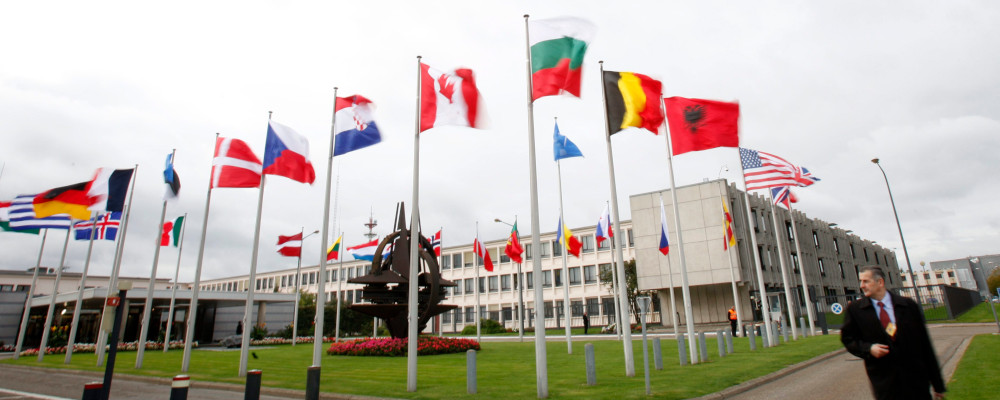
Canada created its own set of complications. During the talks, Pearson began to conceive of the new alliance as something more than just a military arrangement. He wanted—in his more exalted moments—something approaching a social and economic union. He cautioned, wisely, that “Military alliances never last beyond the emergency which gave rise to them” and he wanted this alliance to outlast the current emergency.
The British and Americans, in their own wisdom, did not want negotiations to get bogged down with side issues, especially when the fate of the continent seemed to hang in the balance. Focused on the current emergency, they did everything they could to dilute and demolish what became known as Article 2, the Canadian article. Pearson played hardball and suggested that Ottawa would feel compelled to publicly blame Washington for the defeat of Article 2. He even hinted that Canada might have to withdraw from the alliance.
He eventually managed to secure a measure of (albeit reluctant) support from Britain and true sympathy from France, Belgium, and Holland. Canada had a decent stash of diplomatic credit with Washington and so the superpower (with some grumbling) compromised and allowed an innocuous version of the much-redrafted article into the treaty, which could mean as much or as little as the members would tolerate. Article 2 still declares that members “will seek to eliminate conflict in their international economic policies and will encourage economic collaboration between any or all of them.” Over time, it would prove to be little more than window dressing.
Pragmatic as ever, Pearson accepted the dilution as better than nothing. “It was all we could expect,” he wrote in his memoirs, which perhaps is not a bad outcome for a middle-power. In retirement, he confessed that NATO “never became the organization I hoped it might be. I had no illusions about this.” Perhaps like St. Laurent in proposing the alliance, Pearson was too far ahead of the curve. The heart of the North Atlantic Treaty remains Article 5 which declares that an attack on one is an attack on all.
Pearson’s Atlantic vision would eventually come into being with the birth of the European Union. Yet for all the disappointment, Pearson himself (and many historians) would come to acknowledge that NATO was his greatest diplomatic achievement. This was the hard shield that made sure other Western foreign ministers weren’t thrown out of windows or thousands of innocent people weren’t marched off to die in prison camps to suit the Soviet idea of the good life.
Over the course of the last 75 years, NATO’s relevance and even its raison d’etre have shifted in the eyes of the people it serves. In this current emergency, with Russia, so true to form, attempting political and cultural genocide in Ukraine, NATO once again suddenly seems like a rather good club. Just ask the Swedes and Finns who ditched centuries of neutrality to come on board. Just ask the Ukrainians desperate for the shield we take for granted. Just ask Jan Masaryk.
Recommended for You
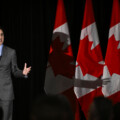
Peter Menzies: Justin Trudeau’s legislative legacy is still haunting the Liberals
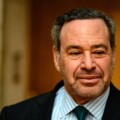
‘You have to meet bullying with counter-bullying’: David Frum on how Canada can push back against Trump’s trade negotiation tactics
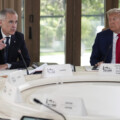
Need to Know: Mark Carney’s digital services tax disaster

Howard Anglin: Lament for a Lament

